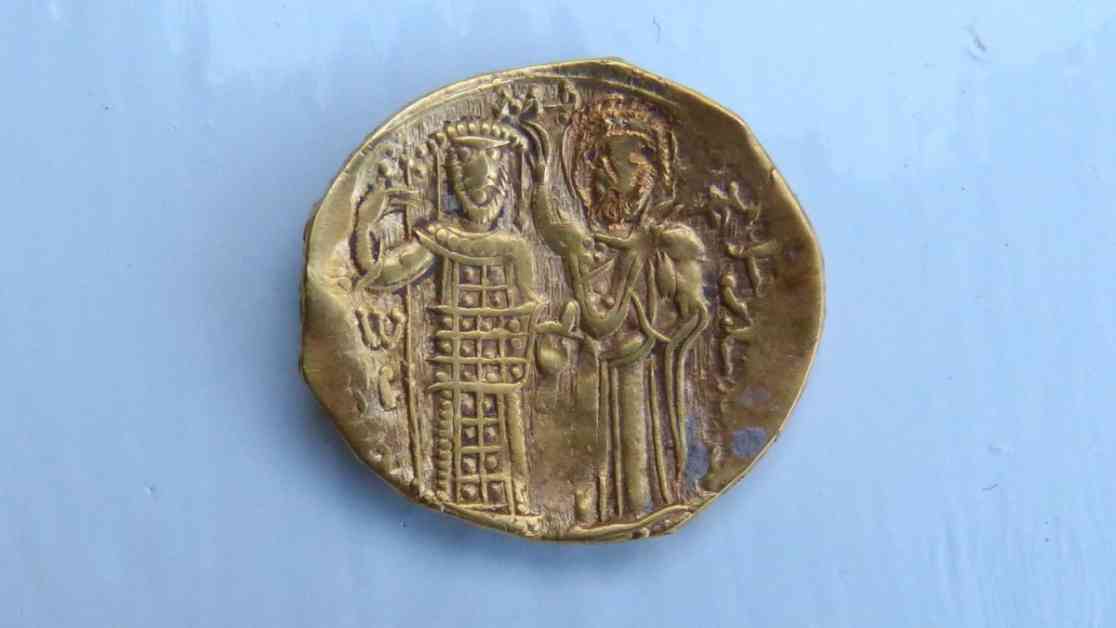A gold coin discovered at a medieval fortress in Bulgaria has caught the attention of archaeologists, shedding light on the wealth of the people living there during the early years of Ottoman Turkish rule. The coin, believed to be from the Byzantine Empire in the early 13th century, may actually date back more than 100 years later.
The discovery was made by a team from the Rousse Regional Museum of History during excavations at the village of Cherven, located near the Danube river and Bulgaria’s northern border with Romania. The coin features two figures on one side, with one dressed in the robes of a Byzantine emperor. While similar coins are often associated with John III Doukas Vatatzes, emperor of Nicaea from 1222 to 1254, archaeologist Svetlana Velikova suggests that these coins could also have been minted by the Latin Empire, a state established by Crusaders who captured Constantinople in 1204.
Recent studies indicate that the Latin Empire produced imitations of Byzantine coins until Constantinople was retaken in 1261. The weight of the coin discovered at Cherven suggests that it may have been resized according to 14th-century standards for the region’s gold coins. This, along with the location of the find, leads experts to believe that the coin could date to the period following Cherven’s conquest by the Ottomans in 1388.
Excavations near Cherven have been ongoing for over a century, revealing the town’s significance during the Second Bulgarian Empire, which spanned from 1185 until its fall to the Ottomans in 1396. Previous discoveries of similar gold coins in 1975 suggest that foreign currency was sometimes used in the region, possibly due to a shortage of local gold.
The latest artifacts unearthed at Cherven include arrowheads, jewelry, and pottery fragments, providing new insights into the wealth and status of the town’s residents. While it was previously believed that those living in the western part of Cherven were generally poor, the recent finds challenge this assumption, indicating a more diverse economic landscape.
The Second Bulgarian Empire was a key player in the medieval Balkans, often in conflict with the Byzantine Empire and facing threats from the expanding Ottoman Empire. Following its conquest in 1396, Bulgaria remained under Ottoman rule for five centuries, with Constantinople falling to the Ottomans in 1453.
The discovery of the gold coin at Cherven adds to the rich history of the region, offering a glimpse into the economic activities and cultural exchanges that took place during this tumultuous period. As archaeologists continue to explore the site, more secrets from the past are waiting to be uncovered, shedding light on the people who once called Cherven home.










